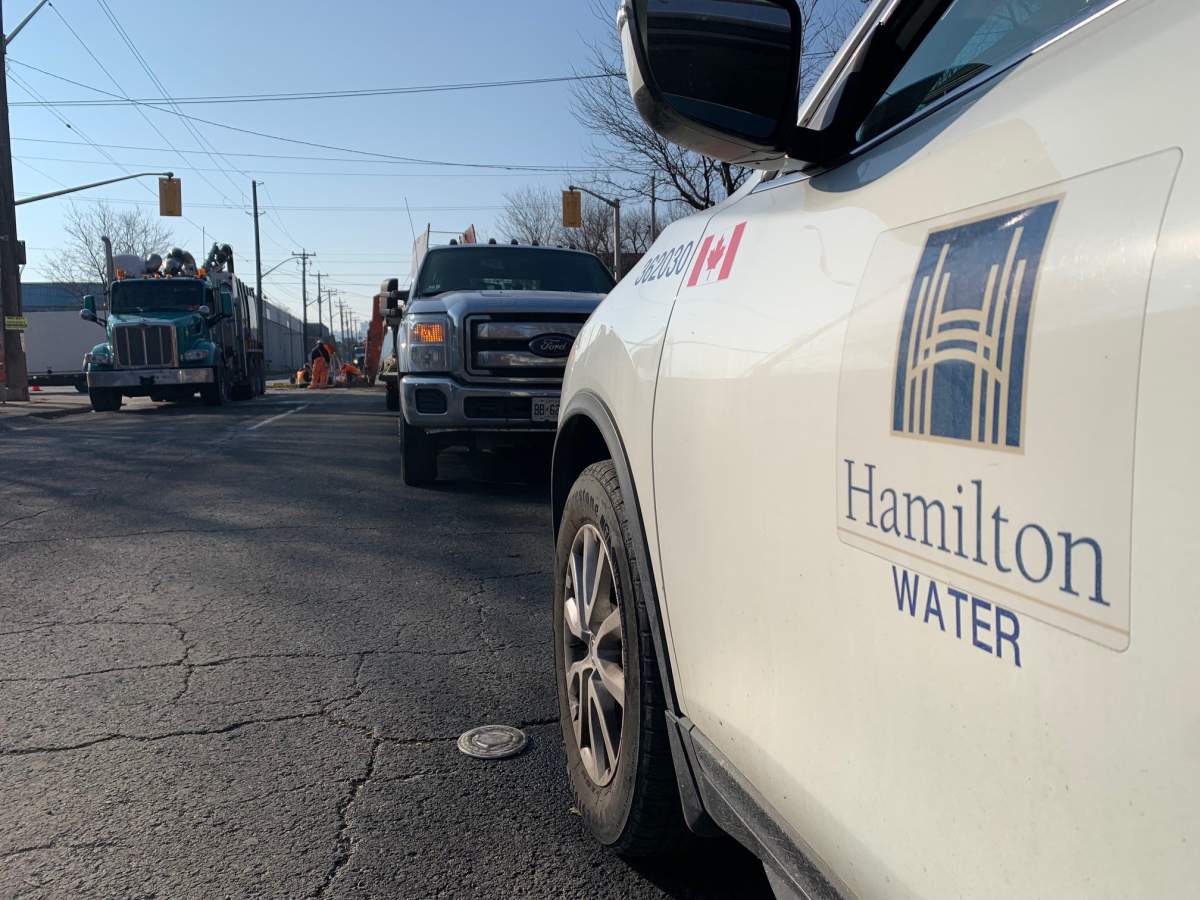A city contractor has finished targeted dredging within Chedoke Creek.

During budget discussions with a committee Tuesday, Hamilton’s director of water Nick Winters confirmed that in-water work was completed last Friday, and the dredging machine doing it was removed from the creek Sunday.
He says the focus now shifts to the final phase of the project, which must be completed by Dec. 31.
“Drying the material that was removed from the creek, trucking it away for disposal, and restoring Kay Drage Park to its original condition,” Winters said.
Winters also told city councillors on Tuesday that the dredged material is being taken to the GFL landfill in Upper Stoney Creek, but he’s not concerned that it will exacerbate odour issues that have plagued residents in that area.
“It has been mixed with a polymer to help with de-watering, it’s been drying in the geo-tubes since July for what is being removed from the site starting today,” added Winters.
The dredging work was part of an MECP order to undertake some sort of remediation of the waterway following the release of 24 billion litres of untreated wastewater between 2014 and 2018.
The work, originally set to happen for six months in 2022, has experienced delays amid negotiations with a group representing the Haudenosaunee Confederacy Chiefs Council, who insisted on participating in monitoring of the remediation as per their treaty rights.
Hamilton councillors put water rate discussions on hold until next week
City councillors, meanwhile, have held off on finalizing Hamilton’s 2024 rate budget.

Get daily National news
They’ve decided to wait until next Monday, before deciding whether to approve an increase of just over 10 per cent or about $88 on the average residential water, wastewater and stormwater bill.
Winters says such increases, which are expected to continue annually throughout the next decade, are needed to help pay for upgrades to one of Ontario’s oldest water and wastewater systems.
A 2022 asset management plan found that the city has historically been under-investing in its water mains, treatment plants and other infrastructure, to the tune of more than $100 million annually.
Winters points to the Dundas Wastewater Treatment Plant, as an example of a facility “that should have been replaced already.”
He notes that the city will be investing $15 million over the next two years, “just to keep that facility safe for our operators, and to ensure its continued functionality.”
Councillors begin discussions on the 2024 budget during the general issues committee meeting on Sept. 20.
During that meeting, the city’s general manager of finance and corporate services alerted councillors the separate water and wastewater rates, initially predicted to be about a 10-per cent increase, could also be impacted by Bill 23 and effectively double.
“The report really provides an indication of the financial position of Hamilton Water and does reference a preliminary forecast for 2024 short of 10 per cent, which is not inclusive of legislative changes that will effectively double that forecast,” Zegarac explained.



Comments